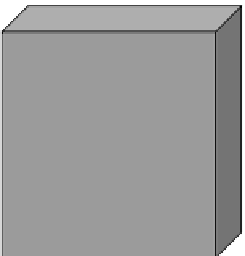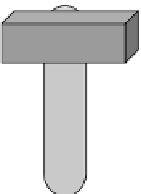Biomedical Engineering Reference
In-Depth Information
4.5.1 P
RESSURE
-A
SSISTED
M
ICROSYRINGE
S
YSTEM
The pressure-assisted microsyringe (PAM) technique, developed at the Interdepartmental Research
Center “E. Piaggio” at the University of Pisa, is based on the use of a microsyringe that allows the
deposition of a wide range of polymers, as well as hydrogels [12]. The system consists of a stain-
less-steel syringe with a 10-20 μm glass capillary needle, as shown in Figure 4.3. A solution of the
polymer, in a volatile solvent, is placed inside the syringe and expelled from the tip by the application
of fi ltered, compressed air. The syringe is mounted on the
z
-axis of a three-axis micropositioning
system, which was designed and built in-house. A supporting substrate, usually glass, is placed on
the two horizontal motors and is moved relative to the syringe. The control software is developed
in C
(a programming language) with a user-friendly graphical interface and allows a wide range
of patterns with a well-defi ned geometry to be designed and deposited. Within horizontal plane, the
resolution of PAM-fabricated parts is 5-600 μm. This resolution depends on the pressure applied
to the syringe, the viscosity of the solution, the motor speed, and the dimensions of the syringe tip.
++
Compressed filtered air
PC
Pressure regulator
Micropositioner
z
Glass needle tip
y
x
FIGURE 4.3
Block diagram of the pressure-assisted microfabrication (PAM) system. The inset illustrates
the capillary needle with an inner diameter of 20 µm.

























